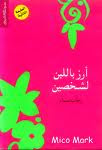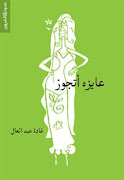The Temimi Foundation for Scientific Research and Information
And
The Center for Advanced Studies of the Arab world at the University of Durham
Organized the thirty second conference of the Forum on Contemporary Thought
on
9th to 11th December 2010
* * *
Final Statement
The Centre for Advanced Studies of the Arab world at Durham University and Temimi Foundation for Scientific Research and Information in Tunisia organized the thirty second conference within the Foundation’s Forum on Contemporary Thought titled:
Arabic language and the challenges of Internet
The conference was opened by speeches by Prof. Abdeljelil Temimi, Dr. Anissa Daoudi of the Centre for Advanced Studies in the Arab world (at Durham University), and the British Ambassador in Tunisia, the Arabist Christopher O'Connor, whose addressed in Arabic this gathering of professors and experts who came from the following countries: Jordan, United Arab Emirates, Britain, Tunisia, Algeria, Russia, Syrian Arab Republic, Serbia, Qatar, Morocco, France, Egypt, and Saudi Arabia in Arabic. The opening of the conference was also attended by the researcher and cultural expert, Mr. Anwar Habibi of the Iranian Association of Culture and Islamic Relations, and the audience included representatives of a number of local and other Arab media.
In his speech Prof. Abdeljelil Temimi, stressed that Arabic is today one of the oldest cosmopolitan languages, the fifth in terms of the number of users, a language which withstood a variety of crises, distortions, deceptions campaigns and challenges. He noted that everyone is called upon to develop projects promoting the Arabic language in the digital age and to study the linguistic reality and the interaction of Arabic with various forms of new expression. Everyone is called upon to enrich the technical content and how to address the realities of machine translation, adaptation, invention and the derivation of terms provided to us by international laboratories on a daily basis.
Dr. Anissa Daoudi highlighted the fact this conference addressed a very sensitive topic that touches on many aspects of the nature of the technological challenges facing Arabic today. Given the participation of experts from Britain, Russia, and France and as well as from many Arab countries of the Maghreb and the Arab East, she hoped that this conference would provide a platform for researchers to exchange expertise and ideas and at the same time to address seriously and practically the challenges that face this language.
The Ambassador of the United Kingdom pointed out that he learned Arabic at Durham University and confirmed that this language has a glorious history, that it is today among the most widely spoken languages in the world, and that its spread throughout the internet is inevitable. He expressed his opposition to the monopolization of one language that might lead to the exclusion of some from accessing information and making it available to as many as possible of the world’s population. He also stressed that most international institutions give Arabic a great importance, including the BBC Channel, which provides all the information in Arabic on its website.
During the eight sessions, 22 papers were presented and discussed in depth in a variety of subjects. They can be summarized as follows:
1. The historical and civilizational importance of the Arabic language:
This session highlighted the historic depth, the integral link of the Arabic language with the other languages and civilizations. It also highlighted the geo-strategic meanings and dimensions of this language. The attendees agreed that the Arabic language:
is a key component and mediator in the transfer Arab-Islamic culture, which has enriched humanity for more than eight centuries;
played a key role as a mediator in transferring other cultures to non-Arabs , not to mention the cultures that were transcribed using the Arabic script;
formed a bond between 22 countries (more than 357 million people) by being their official language; and nearly a billion and half people from across the Muslim world as the language of the Quran;
related to other languages and cultures, since the Arab world is adjacent to and interacts at its frontier regions with many languages, including the languages of the colonizer (English for the countries of the Arab East, and French for the countries of Maghreb);
occupies a growing position as a media language widely spread internationally through the Arabic transmission, which has been reinforced by foreign Arabic-language TV satellite channels;
occupies a growing position in presence and use on the Internet since it is classified as the seventh or eighth language in importance among the world’s languages.
While the coming of the internet has enhanced these implications and dimensions by reinforcing the possibilities to connect the Arabic language and its interaction with other languages and cultures, it has created new problems and served to shed light on gaps, which were the subject of lengthy and important discussions during the conference.
2. Problems and gaps encountered by the Arabic language on the Internet.
The conference’s participants focused on some hot problems of research in relation to the gaps found in Arabic, concluding that its condition today is weak. Reality reveals the language’s importance in terms of its presence and use on the internet, as noted above. However, this presence remains quantitative. It was noted that this language is subject to multiple constraints caused mostly by:
competition from other cultures, languages and systems of information;
the increase in the number of sciences and globalized applied technologies, which do not find their place, in most cases, on the Arab knowledge map;
the growing numbre of terms associated with these sciences and technologies, which often do not find their equivalents in the Arabic language;
the ideological issues related to language: diglossia (Arabic / Amazigh, Arabic / Kurdish, classical / colloquial, Arabic / French, Arabic / English), Arabization / non-Arabization of education; change of the Arabic script into Latin script, etc.;
the inadequacy of computerized and telecommunication infrastructure, which appears in the form of obstacles facing the Arab user in terms of broadcasting, research or communication;
computerizing and digitization of the Arabic language: automated processing of natural language and its applications, automatic indexing, machine translation, OCR Scanning, search engines, etc.;
the weakness of the Arabic digital content: the Arab production does not exceed one and a half percent (1.5%) of the global intellectual production. In addition, this production is not yet collected, processed, or digitized. Attempts by the Alexandria Library, “Sakhr,” and others do not meet basic scientific needs due to the absence or inadequacy of computing solutions such as scanning and search engines;
- the new communicative challenge: the writing imposed by the need to connect through the electronic social media (and this does not concern the official and academic websites, which use literary Arabic), as well as the search for the easiest ways to get the message to the recipient, have led to the use of the spoken language, which is differs the literary language structurally, in spelling, and in grammar, and to use the Latin script, numbers, pictures, etc. to complete the content of the message;
- the weakness of legislation on copyright, publishing and digitization, and lack of enforcement of existing legislation.
3. Possibilities and mechanisms of overcoming the gaps of the Arabic language
In the face of all this, and in order to increase the level of the presence of the Arabic language on the internet and to integrate it into the geopolitical and economic environment of the information and knowledge society, the conference gave rise to very important ideas, analyses and projects. In this context, the participants insisted on emphasizing:
- that the Arabic language is the basis and support of Arab culture, and that its issues are national security issue. This calls for the need to address its situation and take the necessary decisions to maintain and develop it, to achieve its total use, and to instill pride in it and make it at the forefront of national and pan-Arab concerns, including the forthcoming cultural summit;
- the need to increase the competitive potential through:
- strengthening the Arab scientific reference by assimilating the sciences and applications and integrating them into the knowledge map of the region;
- facing the Arabic lexical gap, including the crisis in encyclopedias on the Internet;
- resolving issues of telecommunication and computing infrastructure and digitization of the Arabic language, including the issues of software, indexing, translation, OCR scanning, and search engines, domain names, etc.;
- establishing an Arab industry of digital content by strengthening the infrastructure of information and telecommunication and the imposition of the needs of the region on manufacturers of hardware and software, to suit the particularities of Arabic language and civilization, and meet the shortfall in the specialists in content production, in scarcity of resources, and as well as the lack of cooperation between Arab countries, etc.;
-establishing a three-dimensional digital Arabic base consisting of three gates:
- An Arab digital education portal
An Arabic digital infrastructure portal and Arabic digital library
A portal of modern Arabic translation
- avoiding the double weakness of the holders of the Arabic language through education reform and revision of curricula and pedagogy on the one hand, and on the other, to invite the Arab states to enact a language binding legislation and the development schemes to give linguistic prominence to the Arabic language as the language of identity, civilization, development and national security, and to regulate its necessary relations toother languages;
-addressing the new communication challenge by understanding the new linguistic phenomenon of the Internet, and adopting its modernist aspects and avoiding its negative aspects so that this new language does not replace in the future the written form of Literary Arabic;
-intensifying initiatives such as these fruitful scientific meetings in order to preserve and defend the integrity of our language today and tomorrow.
The participants devoted a session to an open dialogue, which addressed the increasing number of issues of direct relevance to the Internet. This dialogue was characterized by high academic interest, and it was in reality and in fact a very rich interchange of views and insights by all participants in an atmosphere of freedom of expression and mutual respect among all participants.
In conclusion the participants stressed the following:
their feeling of gratitude for the precious opportunity made available to them to get to know the scientific potential offered by Tunisia through academic non-governmental organizations, which serve the knowledge and research, and work to rationalize the scientific projects and to address many of the issues in collaboration with a number of Arab and international scientific institutions. This was expressed on this occasion through the partnership between Temimi Foundation for Scientific Research and Information and the Center for Advanced Studies of the Arab world at Durham University;
their high appreciation to the Arabist Ambassador of the United Kingdom in Tunis who welcomed the participants and to the Director of the British Consulate who supported the initiative to convene the conference;
expressing their deep appreciation and gratitude to Temimi Foundation, in the person of its founder and pioneer Prof. Dr. Abduljelil Temimi, and the Centre for Advanced Studies of the Arab world, in the person of Dr. Anissa Daoudi, for organizing the conference, given its theme’s immediate and future importance for the Arabic language and the Arab world, as well as for the warm welcome and hospitality, and the feelings of genuine brotherhood extended to them.
Back to Basics: Virtually Islamic blog
6 years ago



No comments:
Post a Comment